Uncover Dijon's vibrant flavors and culinary gems with our expert guides. Plan an unforgettable trip now!
Read more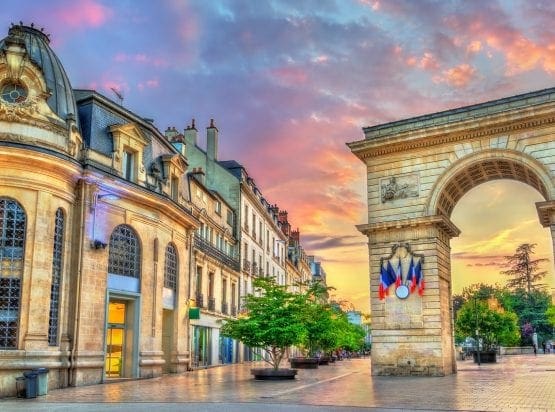
EXPLORE ALL OUR BURGUNDY WINE REGIONS GUIDE
Last updated: April 4, 2025
The world’s greatest Pinot Noir is made in the Côte de Nuits: virile, complex, and long-lived. Indeed, the northern half of the Côte d’Or is red wine country, with only a tiny volume of white vines planted in the zone.
Centuries ago, Benedictine and Cistercian monks determined that the marlstone of the Côte de Nuits, rich in calcium carbonate and minerals, would allow Pinot Noir to express its most profound and complete form, featuring a perfume that can only be described as positively ethereal. It turns out they were right – the Grand Crus of Vosne-Romanée and Chambolle-Musigny come as close to sheer perfection as is possible in the world of wine. And for that, the market will stand almost any price.
Discover More About French Wine
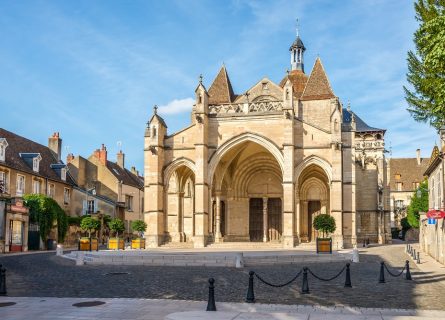
The vineyards of the Côte de Nuits have been cultivated since Roman times; the name Gevrey, for example, is derived from the Gallo-Roman term Gabriacus. The forces of Rome controlled France for over five centuries until the Western Roman Empire fell apart in AD 476.
After that, several rival powers attempted to assert their authority over Gaul; the Frankish Merovingian and Carolingian knights retook most of the Visigoths’ captured territory in the 6th century.
Meanwhile, in AD 800, they crowned the Frankish king Charles the Great (Charlemagne) as the Holy Roman Emperor. Western Europe (excluding most of Spain) became a Christian polity and a source of immense power.
Ecclesiastical Influence on Burgundy’s Wine Legacy
In the early Middle Ages, two entities became heavily involved in wine production and marketing in the Côte de Nuits. They were the Dukes of Burgundy, growing ever more powerful from their base in Dijon and the Catholic Church. Yet the former defied the church: the Burgundian Duke Richard Le Justicier donated land to the Abbey of Saint-Benigne in 894.
Over the centuries, the ecclesiastical establishment at Cluny assumed a great deal of responsibility for wine growing in the region; it directed its monks to study the landscape in great detail, mapping out terroir differences and investigating their impact on wine quality and character.
Their groundbreaking work established the foundations for Burgundy’s now-famous classification system, formalized in the 1800s. Like the Côte de Beaune, much of the land remained under the direct control of the monks until the state seized it during the French Revolution.
Napoleon’s and the Enduring Legacy of Côte de Nuits Wines
Yet the inaugural French Republic was short-lived: Napoleon Bonaparte defeated the revolutionary government and took power in 1799. But Napoleon was an avid fan of the wines of the Côte de Nuits, particularly Chambolle-Musigny and Gevrey-Chambertin. He even signed a decree in the 19th century, allowing communes like Gevrey to use the name of their Grand Cru vineyards as a suffix on the village title.
Thus, Gevrey became Gevrey-Chambertin and Vosne became Vosne-Romanée. The intense allure of these winemaking villages, often unremarkable in terms of architecture, has continued into the 21st century. They repeatedly break auction records, as rare vintages of Leroy Musigny and Domaine de la Romanée Conti can sell for over $45,000 a bottle!
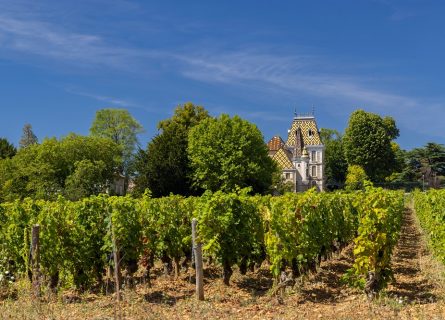
Welcome to Burgundy’s undisputed capital of superlative, long-lived, and majestic Pinot Noir. The vineyard area starts just south of Dijon. It extends to Nuits-St-Georges on the border with the Côte de Beaune, with only a few miles of land devoted to marble quarries separating these two subregions.
Yet, although the wines are world-class, the topography is quite uninspiring – the Côte de Nuits is basically a narrow strip of land, approximately 20 kilometers long and, in some cases, less than 250 meters wide. Nonetheless, the region is full of iconic vineyards, including many Premier Crus and 24 of Burgundy’s 32 Grand Crus.
Each site’s particular qualities and characteristics can vary significantly, albeit many of the top climats face south or southeast, ensuring adequate sun exposure and a concomitant level of phenolic ripeness.
The Unique Terroir of the Côte de Nuits’ Communes
Heading north to south, there are 14 major communes in the Côte de Nuits, each with a unique identity and viticultural history. They possess some of the finest soils on earth, endowed with ancient sedimentary rocks made up of calcareous marlstone and limestone, covered by a top layer of silt and scree (loose stones) over the marl.
This advantageous combination of drainage and moisture retention is partly responsible for the Côte de Nuit’s reputation as an exemplary source of fine red wine. When combined with a favorable aspect and angle, the top climats became unstoppable.
Marsannay and Fixin
Located just south of Dijon, the appellations of Marsannay and Fixin produce some of Burgundy’s best-value wines. Juicy, fragrant Pinot Noir is the hallmark of Fixin’s Premier Crus Les Hervelets and Clos du Chapitre. At the same time, Marsannay (no Premier Crus exists in the zone) can nonetheless turn its hand to excellent rosé and good-quality white wines.
Gevrey-Chambertin
Gevrey-Chambertin has long stood for powerfully structured red Burgundies, thanks to its marlstone terroir covered with silt and scree and a highly favorable mix of shelter and sun exposure. The region has nine Grand Crus, including the mighty Chambertin and its rival Clos de Beze.
These are wines of concentration and muscle that evolve into graceful beauties in bottle after a decade (or more). The Grand Crus of Champelle-Chambertin, Charmes, and Mazis are no less fine; many regard the Premier Cru Clos Saint-Jacques as eminently worthy of promotion to the top ranks.
Morey-Saint-Denis
Morey-St-Denis is a subregion almost entirely associated with its famous Grand Crus: Clos de la Roche, Clos Saint-Denis, Clos des Lambrays (promoted in 1981), and Clos de Tart. They produce a quartet of seductive, exotically scented, and velvety Pinot Noir grown on soils rich in limestone. Morey also has more than 20 small Premier Crus, many of which deserve greater recognition.
Chambolle-Musigny
Critics adore Chambolle-Musigny and its exquisitely fragrant, ethereal, and unbelievably sophisticated red wines. The A-list celebrity remains Musigny Grand Cru, a wine that many regard as Burgundy’s top Pinot Noir red.
Cultivated on brown, lime-rich marlstone covered with stones, Musigny’s terroir has no equal in the commune, and it shows in the hauntingly beautiful flavors that emerge after some bottle age. Bonnes-Mares is a more structured and potent expression of Chambolle, while the Premier Crus Les Charmes and Les Amoureuses are among the best crus of Burgundy.
Vougeot
The 50 hectare Clos de Vougeot is a legend among Burgundy aficionados. However, with a myriad of different owners and variances between the top, middle, and bottom slopes, not every bottle can live up to the name. Flanked by a high stone wall, the best sites tend to be found at the top of the slope, planted on Bathonian limestone overlaid with scree. The best wines are concentrated and lush, with the scent of crushed red fruits and damson jam.
Vosne-Romanée
Remarkably, the modest, even slightly drab village of Vosne-Romanée is surrounded by Burgundy’s most famous vineyards and their gold-plated wines. The red, lime-rich clay in the commune’s six Grand Cru climats, notably La Tâche and La Romanée-Conti, produces red wines of unparalleled finesse and exoticism.
They are both owned by the legendary Domaine de la Romanée-Conti, which also owns parcels in Richebourg, Le Montrachet (Côte de Beaune), and Grands Echezeaux. Yet the zone’s Premier Crus also make stupendous Pinot Noir, sold at non-oligarch prices. Malconsorts and Les Suchots deserve a special mention.
Nuits-Saint-Georges
Prices have yet to enter the stratosphere at Nuits-Saint-Georges, a sizable commune south of Vosne-Romanée. However, the best wines are excellent: ripe and full-bodied Pinot Noir that invokes the weight of Gevrey-Chambertin and the earthy richness of a good Pommard. Even the Premier Crus are rarely that expensive—look out for Clos d’Arlot, Les St-Georges, Les Pruliers, and Vaucrains.
Winemaking in Burgundy is the subject of much disagreement and debate. For every proponent of new oak, there is a staunch critic of its ability to smother the fruit and terroir character; for every winemaker who rejects the use of stems, there is a grower who believes that whole-bunch fermentation produces vastly superior results. It all adds to the fascination and intrigue that surrounds this venerable region.
Controversial Practices
Yet some famous domaines, including Leroy and DRC, are staunch advocates of using stems in the vat. They believe stems impart tannin, complexity, and acidity to the wine. However, critics point out that while the fruit may be ripe, the wood may not be. Thus, hard vegetable flavors may be detected in the Pinot Noir. As ever, it all boils down to personal preference and the aptitude of the winemaker.
Vessel & Temperature: Wine Quality Secrets
The discussion around fermentation vessels and temperature reveals a broad spectrum of practices in the Côte de Nuits. Opinions vary from a minimalist approach, where some winemakers permit temperatures to surpass 95°F, to a perspective that views extremely high temperatures as harmful to the quality of the wine.
However, while it is true that excess heat can burn out the aromas and fruity aromas in the wine, low temperatures extract less tannin and structure from the grapes. The question of post-fermentation maceration is no less contentious – or crucial to the overall quality of the wine.
A brief cuvaison will yield a light and ephemeral wine of little structure – this may be desirable if the vintage was of poor quality, as the winemaker will not want to extract green, unripe tannins. In contrast, the greatest climats – and years – will require a fairly lengthy post-fermentation before the wine is aged in wood.
New Oak: A Burgundy Conundrum
And so we arrive at the ultimate divider in Burgundy: the subject of new oak. Indeed, there is no topic more controversial than using French barrique, if employed at all. There are, of course, entrenched positions on both sides: new oak can greatly enhance a Burgundy wine if the raw materials are first-class. But it can also really spoil the delicate flavors of Pinot Noir, overwhelming the red fruit notes with aggressive – and monotone – aromas of vanilla and toast.
There are also several other factors to consider, not least differences in the origins of the wood, level of toasting, and duration in barrel. Ultimately, a one-size-fits-all approach is simply impossible. The only general rule of thumb is that Grand Crus from a superlative vintage will usually benefit from maturation in oak (100% new in some cases). At the same time, Premier Crus can handle about 50 to 30 percent new barrique. Most growers trust their instincts to find the right path.
Discover more about Burgundy Wine Classifications
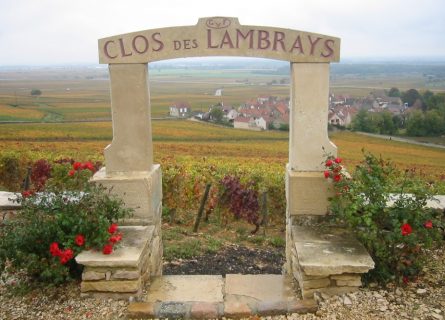
At first glance, little has changed in the sleepy vineyards of the Côte de Nuits; successive generations of the same family have been tending to these vines for over two hundred years, while the list of Premier and Grand Crus has scarcely altered since the 19th century. A notable exception is Clos des Lambrays, the Morey-St-Denis vineyard that was finally promoted to Grand Cru in 1981. Yet the overall impression is of a region united by its respect for heritage and tradition – merely caretakers of this ancient land.
Sustainable Viticulture
But appearances can deceive. In reality, there have been several significant changes in viticultural methods and winemaking in the Côte de Nuits, and almost all of them have been positive. The most important concerns a historic over-reliance on chemical fertilizers and weedkillers; Burgundy wines produced in the 1960s and 70s were often anemic, coarse, and astringent creations, the result of over-fertilization and the introduction of high-yield, low-quality clones.
Yet a new mindset emerged in the late 20th century – realizing that the market would no longer tolerate this under-performing dross. Today’s growers understand the vital importance of low yields, selecting clones based on their quality and not a predilection toward inflated crops. A rising number of producers have also embraced organic and biodynamic viticulture based on the mantra that what is unique about a particular terroir should be preserved at all costs.
The Renaissance of Burgundy Winemaking
Thus, instead of using great volumes of synthetic chemicals, growers encourage biodiversity as a natural pest control method, using carefully judged amounts of copper sulfate to combat mildew and oidium. Horses are also becoming a common sight in the Côte de Nuits, plowing the soil to allow it to breathe.
This holistic and sustainable approach to viticulture has all sorts of benefits: Eliminating fertilizer, for example, encourages the vine to send its roots deep down into the subsoil in search of nutrients and minerals. The result is better wines—more complex, balanced, and terroir-driven.
Modernization and Diversity
Meanwhile, the modern Burgundy cellars (unlike 50 years ago) are spotlessly clean and equipped with temperature-controlled vats, laboratories, air-conditioned barrels cellars, and a crack team of oenologists.
There is also a far greater diversity of gender representation in Burgundy today, with several female winemakers producing some of the region’s top wines. They include Elise Villiers, Agnès Paquet , Véronique Desfontaine and Virginie Taupeno. And, of course, the ultimate celebrity winemaker: Lalou-Bize Leroy.
All in all, there has never been a better time to drink red Burgundy.
Pinot noir is a light-bodied red wine varietal closely related to the Vitis vinifera grape and produces the most sought-after red wines in the world.
Find out more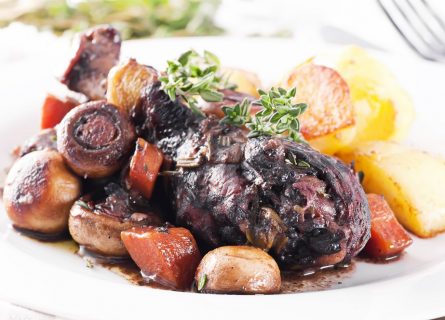
Burgundy is a paradise for gastronomes and epicureans. Two great French passions, food, and wine, come together in a particularly rich and hearty form in Dijon: Burgundians have little patience for bijou portions and microscopic entrées. Classic options include coq au vin, magret de canard aux baies de cassis (duck’s breast with blackcurrant sauce), and the always delicious Boeuf Bourguignon.
A Gastronomic Guide to the Cuisine of Burgundy: Read more

Uncover Dijon's vibrant flavors and culinary gems with our expert guides. Plan an unforgettable trip now!
Read more
Uncover Auxerre's vibrant flavors and culinary gems with our expert guides. Plan an unforgettable trip now!
Read more
Uncover Beaune's vibrant flavors and culinary gems with our expert guides. Plan an unforgettable trip now!
Read moreIf you would like us to customize an exclusive luxury tour, contact us and let us know your travel plans. We offer luxury food and wine tours for private groups of a minimum two guests. In addition, all of our private, chauffeured tours are available year-round upon request.

